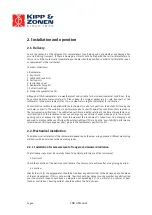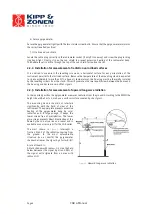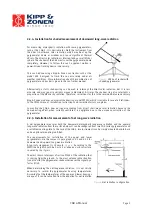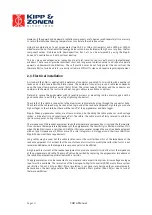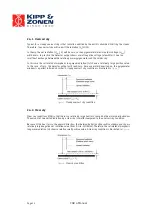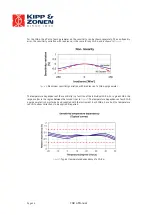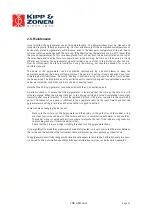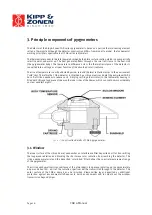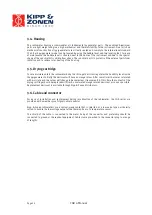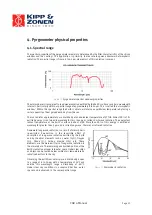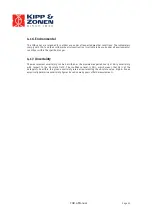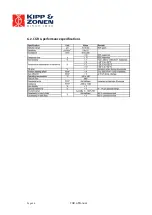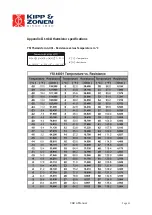
4.2. Sensitivity
The radiometer thermopile sensitivity is mainly determined by the physical properties of the detector
itself. The thermoelectric power, thermal conductivity of the junctions and the overall dimensions of the
sensing element are related to its sensitivity.
4.3. Impedance
The radiometer impedance is defined as the total electrical impedance at the radiometer output connector
fitted to the housing. It arises from the electrical resistance in the thermal junctions, wires and passive
electronics within the radiometer.
4.4. Response time
Any measuring device requires a certain time to react to a change in the parameter being measured. The
radiometer requires time to respond to change in the incident radiation. The response time is normally
quoted as the time for the output to reach 95% (sometimes 63%) of the final value following a step-change
in irradiance. It is determined by the physical properties of the thermopile and the radiometer construction.
CGR series pyrgeometers have a fast response, which makes them suitable for measuring far infrared
radiation (FIR) under variable weather conditions.
4.5. Non-linearity
The non-linearity of a pyrgeometer is the percentage deviation in the sensitivity over a net irradiance
range from -250 to +250 W/m² compared to the sensitivity calibration irradiance of -100 W/m². The
non-linearity effect is due to convective and radiative heat losses at the black absorber surface which
make the conditional thermal equilibrium of the radiometer non-linear.
4.6. Temperature dependence
The sensitivity change of the pyrgeometer with ambient temperature change is related to the thermodynamics
of the radiometer construction. The temperature dependence is given as percent deviation with respect to
the calibrated sensitivity at +20°C. The CGR 4 has passive electrical compensation circuits to minimise
this effect. Each CGR 4 pyrgeometer is supplied with an individual test certificate stating the temperature
dependency in the range from -20°C to +50°C, at 10°C intervals. The CGR series pyrgeometers are fitted
as standard with an internal temperature sensor to allow sensitivity corrections to be applied if desired.
4.7. Tilt error
This is the deviation from the sensitivity at 0° tilt (exactly horizontal) over the range from 0° to 90° tilt.
The tilt response is proportional to the incident radiation. The error could be corrected for, in applications
where it is necessary to install the pyrgeometer on an inclined surface, but is usually insignificant.
Page 20
CGR 4 Manual

